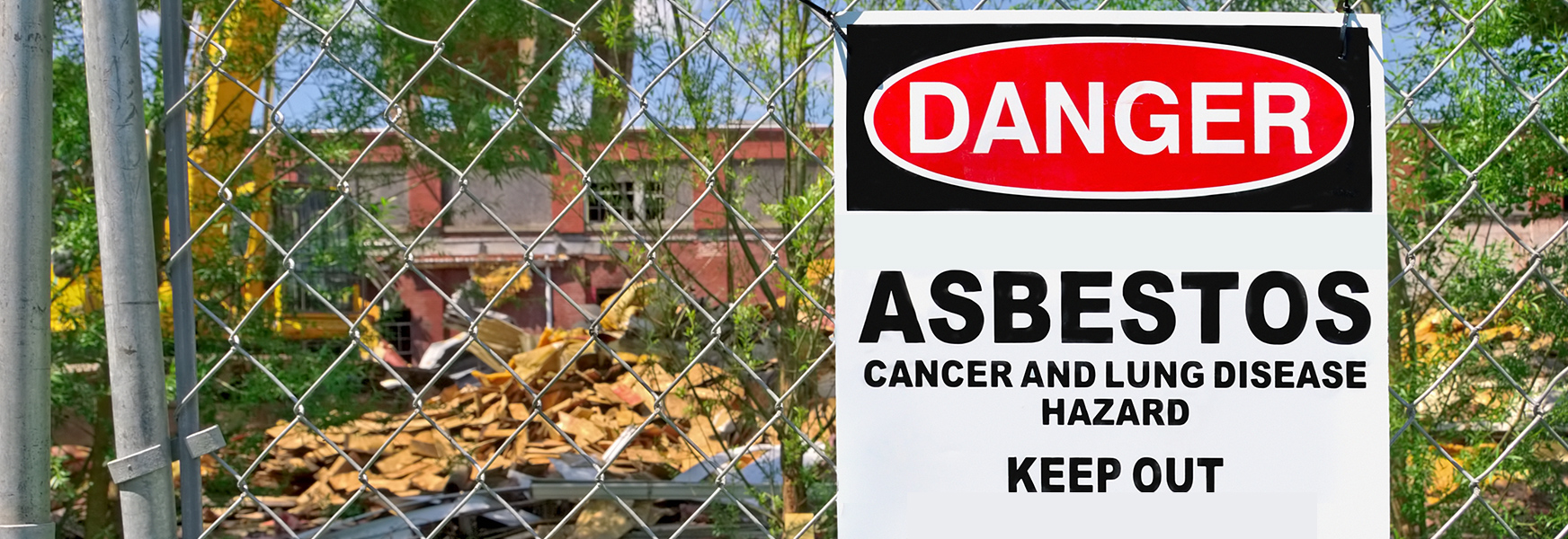Safely Tearing Down an Old Mill Building "Asbestos" They Can

There’s an old textile mill building in the town of Sanford, Maine that’s being dismantled piece by piece rather than razed by implosion or wrecking ball due to the presence of asbestos. Under the guidance and financing of the U.S. Environmental Protection Agency, the mill tower, long vacant and ravaged by arson fire in 2017, is being “cut” by a behemoth excavator equipped with an extended “scissorhand” and water mist ejection to suppress fugitive dust emission. The demolition project is budgeted at 1.7 million dollars because of the naturally occurring silicate mineral that can be deadly depending on exposure time and concentration. Slated to take over two months, the steel from the mill will be cleaned for reclamation with the remaining rubble removed from the site to an approved landfill.
Dubbed the miracle mineral, asbestos has been used for thousands of years with widespread application in the 20th century, mainly for its strengthening and fireproofing properties in a multitude of building materials and commercial products. At one time, it was even used in a cigarette manufacturer’s cigarette filter, touted to be a “safer” filter to trap tar from incinerated tobacco. Certainly, that’s as close as it comes to mainlining the menacing mineral. Research later discovered a synergistic effect of asbestos and cigarette smoke inhalation for the development of lung cancer. The asbestos used in the filter was crocidolite, known as blue asbestos for its color, which is one of the more hazardous types out of the six different asbestiform minerals. The most commonly used type, chrysotile or white asbestos, is estimated to account for roughly 95% of asbestos found in buildings in the U.S.
Today, many countries have banned the use of asbestos in building materials due its serious health hazard in causing asbestosis, mesothelioma, lung cancer, and other related diseases as a dose dependent response. However, where asbestos was widely used in pre-1980’s commercial and home construction, many building structures may still contain asbestos in the form of thermal system insulation (boiler coating and pipe and fittings covering), surfacing material (plaster, joint compound, popcorn ceiling coating), and miscellaneous material such as flooring (in both tile and sheet form), ceiling tile, roofing, and exterior siding. For this reason, do-it-yourself homeowners should first consult with an asbestos-testing firm prior to engaging in “vintage” home renovation that may impact on these types of products. Clearly, when it comes to the whereabouts of asbestos, when in doubt, consult with an asbestos professional.
The removal of asbestos or abatement through encapsulation or enclosure is heavily regulated at the federal and state level. OSHA addresses asbestos hazards for general industry, construction, and shipyard employment in specific standards with a Safety and Health Topics page on their website that includes an asbestos fact sheet, self-inspection checklist, and additional resources with a link to the Environmental Protection Agency (EPA) website. The EPA regulates asbestos in schools under the Asbestos Hazard Emergency Response Act (AHERA) and specifies work practices for renovation and demolition of “all structures, installations, and buildings (excluding residential buildings that have four or fewer dwelling units)” under the National Emission Standards for Hazardous Air Pollutants (NESHAP) regulations. Each state enacts its own laws for asbestos and in the case of the demolition of the Sanford mill building, The Maine Department of Environmental Protection's Chapter 425 Asbestos Management Regulations apply.
It’s truly remarkable how this “inextinguishable” mineral called asbestos, mined from the cradle of earth’s crust, has given rise to both prosperity and ruin, before eventually finding its way back to an earthen grave. For more OSHA related information, check out these MEMIC Safety Net posts.
By Greg LaRochelle

